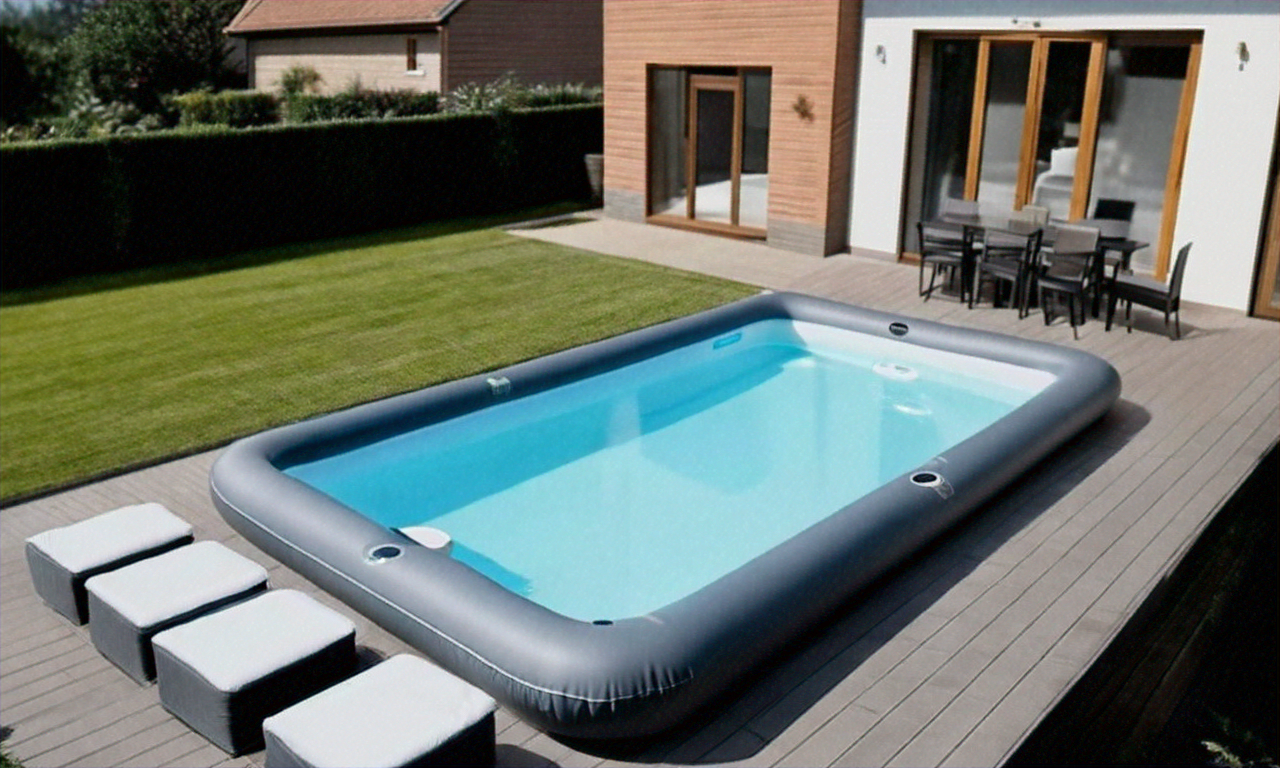Designing Your Dream Backyard Pool Oasis: Complete Guide
Transform your outdoor space into a relaxing, functional backyard pool oasis with smart design choices and straightforward maintenance. Learn about pool types, essential features, safety, energy-saving equipment, and how to prepare your yard so your pool delivers years of enjoyment and adds value to your home. Discover practical tips on pool design, summer upkeep, and sustainable upgrades to keep costs down and water clean.

A backyard pool can turn ordinary outdoor space into a private retreat for relaxation, exercise, and entertaining. Whether you’re planning a new installation or upgrading an existing pool, understanding design options, maintenance needs, and efficiency upgrades helps you build an aquatic space that fits your lifestyle and budget. This guide outlines the key features, site preparation steps, seasonal care, and sustainability choices to create a pool you’ll enjoy for years.
Essential features that enhance function and appeal
Modern pools can be tailored to balance visual impact with practical benefits. Lighting—especially low-energy LED fixtures—extends usable hours and creates ambiance. Consider an efficient heating option if you want a longer season; heat pumps, gas heaters, and solar systems each have trade-offs in cost and operating expense. Decorative water elements like fountains, bubblers, or waterfalls add movement and sound while improving circulation.
Safety must be part of the design plan. Local codes often require secure fencing, self-closing gates, and in some areas, covers or alarms. Automatic pool covers help prevent accidents and reduce evaporation. On the comfort side, features such as beach or zero-edge entries, tanning ledges, integrated seating, and shallow lounge shelves increase usability for families, sunbathers, and social gatherings.
Preparing your backyard for a successful pool project
A durable pool begins with proper site preparation. Evaluate drainage to avoid water pooling around structures and choose a location with good sun exposure if warmth and algae control are priorities. Clear and level access for excavation equipment and ongoing service vehicles will simplify construction and future maintenance.
Thoughtful landscaping should complement the pool while minimizing debris in the water. Use non-invasive groundcovers, well-placed hedges, and hardscaping to reduce leaf litter and maintenance. Plan distinct functional zones—lounging and sunbathing areas, an outdoor dining or kitchen space, and a discreet equipment or storage area—so each activity has room without cluttering the pool deck.
Summer maintenance essentials to keep water safe and clear
Consistent maintenance preserves water quality and extends the life of your pool components. Regular tasks include testing and balancing sanitizer and pH levels, cleaning or backwashing filters, skimming surface debris, and running pumps long enough each day to ensure proper filtration. Keep water at the recommended level to protect pumps and skimmers from damage.
Higher bather loads and warm temperatures in summer mean more frequent testing and chlorine adjustments. Shocking the pool periodically helps control organic contaminants, and brushing surfaces prevents scale and algae buildup. A written maintenance schedule—daily skim, weekly chemical checks, monthly filter service—can prevent small issues from becoming larger, more costly problems.
Saving water and energy without sacrificing comfort
Energy-efficient technology lowers operating costs and reduces environmental impact. Variable-speed pumps use far less electricity than single-speed models because they can run at lower rates for filtration and higher rates for cleaning. LED pool lights consume minimal power and last much longer than traditional bulbs. Choose a heating system suited to your climate and usage; heat pumps and solar covers are cost-effective for steady, moderate heating needs.
Water-saving practices also make a difference. Using pool covers reduces evaporation and retains heat, lessening the need for frequent top-offs and heating. Consider integrating rainwater capture for landscape irrigation to offset pool-area water use. Automation and smart controllers allow you to optimize run times for pumps, heaters, and lights, matching performance to actual use and avoiding wasted energy.
| Pool Type | Average Installation Cost | Maintenance Level | Lifespan |
|---|---|---|---|
| Concrete | $35,000 - $100,000 | High | 30+ years |
| Fiberglass | $20,000 - $60,000 | Low | 25+ years |
| Vinyl | $25,000 - $45,000 | Medium | 10-15 years |
Prices, rates, or cost estimates mentioned in this article are based on the latest available information but may change over time. Independent research is advised before making financial decisions.
Choosing the right pool for your needs and budget
Each pool material has pros and cons. Concrete offers near-limitless design flexibility and longevity but typically requires more maintenance and a larger upfront investment. Fiberglass pools come pre-formed, install faster, and often need less chemical attention, while vinyl liners lower initial expense but may require liner replacement over time. Match your choice to how much maintenance you want to perform and how long you plan to keep the pool.
Finally, remember that a well-designed and serviced pool enhances outdoor living and can improve property value. Prioritize safety upgrades and water quality, plan landscaping and zoning to reduce debris and maximize use, and select energy- and water-saving systems to limit ongoing costs. With careful planning and a consistent maintenance routine, your backyard pool can be a long-lasting source of leisure and enjoyment for family and friends.






